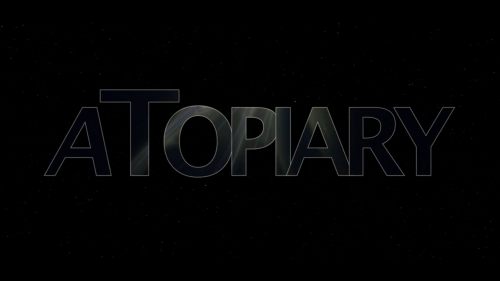Sundance Review: UPSTREAM COLOR Is Holy
It’s been a long time since Shane Carruth blew our minds with Primer. So long, in fact, that some began to wonder if Carruth wasn’t Harper Lee-ing it, giving us one masterpiece and retiring. The good news is that he’s back this year with a new film, Upstream Color. The better news is that Upstream Color is not just amazing, it’s better than Primer.
This is once again a science fiction story, but this time the narrative is clearer than Primer. There are these special plants, and grubs that feed on these special plants get harvested by a man. Those grubs, when made into a tea, can produce something extraordinary, a kind of personal synchronicity. When the grubs are ingested whole they grow into worms, and those worms make their host incredibly susceptible to suggestion. So much so that the man who harvests them uses them as a way to rob people blind; he gets the worm in you and forces you to mortgage your home, to take out all your money from the bank, to cash in all your stocks.
When the thief is done you’re left in a confused, horrified state. But there’s a man - a man who samples the sounds of nature, Blow Out style, and turns them into recordings - who can seemingly help. He calls the worm-infected to him using low frequencies, and he is able to remove the worms and implant them in pigs. The infected go back to their shattered lives, while the sampler takes the pigs home. And somehow the worms in the pigs allow the sampler a window into the lives of the previously infected.
Amy Seimetz plays the woman. After picking up the pieces of her life she meets a guy on the train (writer/director Shane Carruth), and the two begin a tentative relationship. Eventually it all comes back to the pigs, but to say anymore would be to give it away.
The story is clear, even though Carruth uses a form of cinematic ellipsis to tell it. The film is often hazy and dreamlike, segueing in and out of the narrative, but the story never feels obfuscated. If anything this approach heightens the emotional layers of the central relationship; by going semi-impressionistic, Carruth is able to get across some profound and touching truths about humans being together that wouldn’t play as successfully in a more straightforward structure.
The question is what it all means. One of the joys of Sundance 2013 was talking to other critics whose interpretations of the films diverged wildly from mine, and yet every interpretation felt plausible. This might be the genius of the movie, the way it allows you to personalize it like a great song. I mean, I’ll go to bat for my interpretation (and I’ll share that interpretation in the future, when more people have a chance to see the film), but I can also support the different takes proposed by other thinkers.
There’s profundity dripping from Upstream Color; the film moves us to think in big terms, in spiritual terms, in terms of the whole of the human experience. There’s a psilocybin quality to the film’s peaks and valleys, but also to the way it reveals a structure to us that seems fractal. 2001: A Space Odyssey isn’t a strong comparison point for Upstream Color except in the way that it stimulates a feeling of discovery and transcendence, even if it’s discovery of something that we can’t quite nail down on first viewing. Upstream Color isn’t as mind-bending in construction as Primer, but it requires even more engagement than that film. This isn’t a movie that will come to you; like all great personal growth experiences it requires plenty of effort. It’s the kind of movie that sends you home wanting to do more research (do yourself a favor and have a copy of Thoreau’s Walden waiting for you at home. Trust me on this).
It’s also a beautiful experience as cinematic art. Upstream Color won a special jury prize at Sundance for sound design; while dialogue can be sparse during the film the soundscape is dazzling, as is the soundtrack by Carruth (jack of all trades, infuriatingly master of most of them). The editing of the film is nothing short of stunning; while the story isn’t exactly thriller-level propulsive, the editing keeps the pace clopping along at a terrific clip. There’s never a moment where you’ll feel bored, and even in the film’s most obscure and fractally repeating moments you’ll never fidget in your seat. Upstream Color is enthralling.
There’s a sense of humor in Primer that’s missing from Upstream Color; this is a much more self-serious film in many ways. That makes sense - it’s a movie about damaged people trying to heal themselves and each other - but I would have liked a bit more of that wryness. There are moments of humor, and there are moments of lightness, but after a first viewing what stands out about Upstream Color is a sense of swirling, post-theistic holiness.
The wait was worth it. I do hope that Carruth makes another movie in this decade, but if he doesn’t Upstream Color certainly leaves us more than enough to chew over for another nine years.



